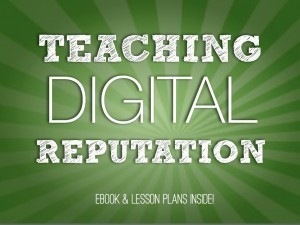Erik Qualman's Blog, page 589
August 28, 2014
Is Social Media Helping You Score the Best Credit Card?

Credit scores are not something you mess with. Easy to hurt, much harder to fix – a low credit score can be damaging once it’s there.
But sometimes you need a credit card. When searching for one, be thorough and be wary. Be wary of high interest rates and penalties. Be wary of anything that can come back to haunt you.
Oddly enough, one way to research credit cards to find the best one is through social media.
Restrictions marketing to young people
Credit card companies have restrictions regarding how much they market to young people (for instance, being too close to college campuses and wooing with free merchandise), but now they’ve turned to social media to get the younger crowd.
The good news is, according to creditcards.com that the college age crowd carries a fairly low amount of debt, and those with high incomes had lower debt than those without. However, any debt can lead to more debt, a bad cycle for a college kid to get into.
With the average college student debt amount around $755, this has potential to begin the debt cycle and add up over the years. Because people younger and younger are using credit cards, it’s even more important to choose the right one.
What can you do to keep a good credit score?
• Find the best card to meet your needs. High limits are not really good things. You probably don’t need one with a high limit; the lower the limit, the less debt you can accrue.
• Check out social media benefits. Some cards offer incentives and sweepstakes for joining their social media sites, others make it easy to redeem rewards and donate through social media.
• You can also follow their sites to garner feedback, both positive and negative, to see if this is the card for you.
• Look into alerts and automated feedback. As the following article shows, if you wonder “How a bill alert can improve your credit score”, it’s as easy as reminding you to pay that bill and not let it lapse into a late fee and increased interest rates. Maybe the card that offers this is the card for you.
• The obvious – try to pay your bill in full, on time, every time. Sure, things happen sometimes, but if you are in the habit of only paying the minimum, maybe it’s time to stop using the card or your credit will sink lower and lower.
• Maybe you want fraud protection or at least a notice if there is something out of the ordinary on your card. You can receive these electronically, and if fraud is caught, your credit can be saved.
Social media, email, text alerts and incentives can all add to keeping your credit in good standing.
Your credit score will stay with you, try to stay out of trouble with it, and one good way is to manage your credit cards.
Take all the help you can get.
Photo credit: Image courtesy of hin255 at FreeDigitalPhotos.net
[image error]
August 27, 2014
Is it worth investing in social media?

As key American indices were hitting new record highs last month, Janet Yellen issued a statement – alongside a Federal Reserve report – warning about the stretched nature of social media stocks.
For the chair of the Federal Reserve to issue such a direct warning to the markets was highly unusual, and a telling reflection of the huge enthusiasm that traders seem to be feeling about social media.
And Ms. Yellen was probably correct to call out this relatively new sector as over-inflated. The typical measure of a stock’s cost compared to its value used by the markets is its price to earnings (PE) ratio: the current cost of a share divided by its profit per share. Around the time of Ms. Yellen’s speech, Facebook’s PE ratio was around 90, whilst its index had a PE of around 35.
Beyond Facebook, the share prices of Twitter, LinkedIn and Yelp had all been on the rise since early May; all those companies are worth billions of dollars despite not yet having produced any profit. So why have traders been showing such enthusiasm for businesses that have, as yet, failed to display profitability?
The answer lies in Facebook’s earnings report of a year previously, when the business stunned the markets by announcing a sharp increase in advertising revenue alongside its usually healthy user metrics.
That was enough to convince traders that social media could be a profitable enterprise. Whilst Facebook’s competitors have yet to fully demonstrate that they can pull off the same feat, the hope is that they will in the near future, offering major returns to investors that got in early.
Indeed, anyone who bought shares in Facebook for $25 each in July last year would now be seeing an impressive profit, as they are currently worth $75.
How Facebook got its face back – the remarkable rise of the company over the past 13 months, as of August 20. According to IG’s CFDs and spread betting website.
But as traders are trying to second guess social media companies to predict who might pull off the next rapid rise, are social media professionals in a better place to spot success?
Whether working for a major brand, agency or a social media based enterprise business, social and digital media professionals pay far more attention to fashions, trends and successes than investors do. As traders attempt to delve into Twitter’s quarterly financials to seek answers on whether it can entice smaller companies to its advertising platform, social and digital professionals can see where the market is going in real time.
Beyond the platforms themselves, those with insight into companies undertaking successful, profit-driving social media strategies can steal an edge on many traders. Those who saw Burger King’s better utilisation of social media than McDonalds a few years ago (and subsequent rise on the markets) would now be seeing healthy gains, for instance.
There are drawbacks, of course; those who are uncomfortable in financial trading should not dive in just because they have an expertise in one particular market. The markets do not rely on individual businesses alone, a company’s share price could go down even if they post strong profits.
Finally, getting to a new social media enterprise early can be tough, mainly as most in the past have waited until they are already major brands before going public (or in the case of earlier offerings, selling to another company).
But none of that has prevented thousands of traders from scrutinizing the sector for the next Facebook. If you believe that you are more capable of finding that company than others, there are plenty of ways to see if you are right.
Spread bets and CFDs are leveraged products. Spread betting and CFD trading may not be suitable for everyone and can result in losses that exceed your deposits, so please ensure that you fully understand the risks involved.
This information has been prepared by IG, a trading name of IG Markets Limited. The material on this page does not contain a record of our trading prices, or an offer of, or solicitation for, a transaction in any financial instrument. IG accepts no responsibility for any use that may be made of these comments and for any consequences that result. No representation or warranty is given as to the accuracy or completeness of this information. Consequently any person acting on it does so entirely at their own risk. Any research provided does not have regard to the specific investment objectives, financial situation and needs of any specific person who may receive it. It has not been prepared in accordance with legal requirements designed to promote the independence of investment research and as such is considered to be a marketing communication. Although we are not specifically constrained from dealing ahead of our recommendations we do not seek to take advantage of them before they are provided to our clients.
[image error]
Leaders in Advocate Marketing: Q&A with Erik Qualman

 Last week, we launched our “Leaders in Advocate Marketing” series with Jason falls – you can read the first post here. As a quick reminder, we started this series to help brands understand the word of mouth landscape and how to drive the best results across social, email and all customer engagement channels. The social media leaders we’re interviewing will give their advice on the future of social media advocacy and influence, along with detailing how brands can activate their most effective advocates.
Last week, we launched our “Leaders in Advocate Marketing” series with Jason falls – you can read the first post here. As a quick reminder, we started this series to help brands understand the word of mouth landscape and how to drive the best results across social, email and all customer engagement channels. The social media leaders we’re interviewing will give their advice on the future of social media advocacy and influence, along with detailing how brands can activate their most effective advocates.
This week, we sat down with Erik Qualman, professor, international author and keynote speaker. He is also the former head of marketing at Travelzoo Inc. (TZOO). Erik’s book, “Socialnomics,” made Amazon’s #1 Best Selling List for the US, Japan, UK, Canada, Portugal, Italy, China, Korea and Germany. His 2012 book, “Digital Leader,” propelled him to be voted the 2nd “Most Likeable Author in the World” behind Harry Potter’s J.K. Rowling, and Erik recently authored a third hit,
“What Happens in Vegas Stays on YouTube.”

Erik Qualman, Professor of Digital Marketing, Hult Business School, Author, Socialnomics
1. Have you seen any brands that truly have visionary senior executives when it comes to brand advocacy and social adoption?
Some of the most visionary senior executives include Tony Hsieh at Zappos, Ragy Thomas at Sprinklr, Dave Kerpen at Likeable Local, Julia Hartz and Kevin Hartz at Eventbrite, Angel Martinez at Deckers Outdoor, Mark Stanley at Sony PlayStation, Jill Puleri at IBM, and Lyndon Lea at Lion Capital. For example, when you look at Hsieh, he allows all of his employees access to the Zappos social media accounts. His thought process is this: we at Zappos trust our employees and in turn they don’t belie this trust. If you look at Dave Kerpen at Likeable Local, he and his wife Carrie are already using Snapchat to recruit young talent, which is far ahead of the social technology curve for most companies.
2. How is brand advocacy different on Facebook vs. Twitter?
On Facebook, advocates can share deeper thoughts. The tool lends itself to longer posts, images and video. More than just the ability to share deeper content, Facebook also lends itself to deeper relationships, so advocates on Facebook generally have stronger relationships with friends than an advocate on Twitter has with his/her followers. Twitter is an effective broadcast platform, but doesn’t have the same advocacy depth as Facebook due to the short posts and public nature of the platform/followers.
3. What brands and people would you consider yourself an advocate of?
I advocate for strong brands and people like Zappos, Likeable Media, Uber, Warby Parker, U.S. Global Entry, Michigan State University, Amazon Prime, McCombs School of Business, Gary Vaynerchuk, Guy Kawasaki, Shark Tank and Michael Parrish DuDell.
U.S. Global Entry doesn’t sound sexy, but it sure as heck is sexy when it only takes me three minutes to enter the country instead of three hours. They excel at being consistent; with them, I don’t have to fill out the re-entry form and the longest I’ve ever waited in line upon my return is five minutes. Better still is that they smile and treat me like I’m staying at the Four Seasons rather than going through the brow beating questions I used to face.
4. What do you consider the main difference between advocacy and influence?
The main difference between advocacy and influence is the share of voice each has access to. There are a limited number of influencers – these are your top thought leaders. On the other hand, there is no limit to the number of advocates a brand might have.
Advocates have influence, but not at the initial scale of an influencer/thought leader. What it comes down to is that both influencers and advocates are crucial to a successful program. If a company is able to earn accolades from a handful of influencers and hundreds of advocates, then they are positioning themselves for great success and an improved bottom line.
[image error]
Twitter Takes on Video Advertising

Twitter announced last week that, for the first time, it would now feature video advertisements in viewers timelines. This new regime is titled ‘Promoted Video’ and follows Facebook’s movement towards bespoke promotional clips tailored to their users. By using native video advertising the clips should seamlessly fit into the site giving users a more varied experience without being too obtrusive.
After months of trials and liaising with both users and advertisers, Twitter have created a programme that allows brands to easily upload and share videos. In addition, they are offering advertisers access to effective analytical tools that will provide information on the success rates of their videos, such as video completion percentages. The videos will not automatically play and will need to be clicked to run, they will work on a Cost Per View basis so brands only pay when users start to watch their video.

Twitter has over 271 million users, not including those who view profiles without an account. Following Facebook’s introduction of video advertisements last December, it is not a surprising move for the social network and will assist brands with reaching out to their users.
Video is an extremely powerful tool for advertisers and with an audience as big as Twitters’ it seems a natural direction to move towards. In their post Twitter state they are wanting to ‘create a richer and more engaging Twitter’ and feel that video is the way to do this.
This post was submitted by Lucy Wadsworth – a work experience student at Skeleton Productions.
[image error]
August 25, 2014
Building a Digital Citizenship Curriculum You Can Be Proud Of

Erik Qualman, best-selling author of Socialnomics, Digital Leader and What Happens in Vegas Stays on YouTube, is helping educators across the country infuse important lessons about digital citizenship into their curriculum. Erik’s books are being used in 200 courses at the top universities in the countries. He serves on the American College Personnel Association’s Digital Task Force in Higher Education, and his latest book What Happens in Vegas Stays on YouTube is being used at institutions like Indiana University Southeastern, Rutgers University and Villanova University among others as a common reader.
Erik’s latest initiative is designed to help any educator that wants to infuse lessons around digital citizenship into their curriculum. The Education Resource hub includes the following materials.
Lesson Plans
Multimedia and Discussion Guides
Interactive Learning Modules
eBooks
Printables for Classrooms/Offices
An example of one of these resources is the newest eBook from Equalman Studios, Teaching Digital Reputation. Get your copy here and start coming up with new ideas today that you can use to engage your students in important conversations about digital citizenship.

Visit the Education Resource Hub for more great resources!
[image error]
How can Business Owners Enhance Their Success on Social Media?

It doesn’t matter whether you own a small business or you have already established a successful brand; the charms of social media can enhance everyone’s success!
If you stick to the right strategy, it won’t be difficult to reach a greater audience and start turning your base of followers into profit. The following tips will help you do that!
1. Image Sizing is Important!
If the image is out of focus or too small for the given space, the visitor of your profile won’t be impressed. If you didn’t manage to get this right, the potential customer will quickly assume that you do many other things wrong as well.
This simple will help you understand the importance of proper sizing and start enriching your profiles with proper images.
2. Social Share Buttons Add to the Effect!
You can never know what your customers would like to share on their social media profiles, so you should enable them to share everything. There should be an abundance of sharing buttons at your website, so your visitors can share the content with their friends and followers on Facebook, Pinterest, Google+, Twitter, etc.
3. Encourage Your Customers to Share Honest Reviews
If your products and services are good, you don’t have to be afraid of customers’ reviews. If you are afraid to hear what people think of your business, then there are drastic changes you should be making. Encourage your followers to share their honest reviews via Urbanspoon, TripAdvisor, Yelp, or another site relevant to your niche.
4. Stay Real and Win Friends
If you do everything right, then your communities on social media networks will constantly grow. This can make your customers feel like they are lost in a huge crowd and no one pays attention to their comments or posts. Remember what Dale Carnegie said in his : “Names are the sweetest and most important sound in any language.”
It doesn’t take much effort to respond to a question from a fan and use his/her name when doing that. People appreciate that more than you think.
5. Don’t Forget Google+ Authorship
Since online content is published every day, your articles can easily get lost in the great volume of search results. With the help of Google Authorship, a link to more of your content will appear in the search results, along with your photo that will capture the interest of search engine users. This is one of the smartest and easiest ways to optimize your content for the greatest search engine.
6. Links Should Lead to Your Profiles
As every other business owner, you want the information that appears for your brand in search results to be positive. The best way to control that information is to have your website and social media profiles appear on the first page of the results. What this means is that you should start building links to those pages.
One way to do that is by asking your customers to share the links on their blogs or sites, but you can also buy likes and fans that will help you improve your reputation.
7. Promote Interest with Hashtags
Hashtags are a great way to engage your base of followers and use their activity to promote your brand. You can use Twitalyzerto track the usage of hashtags within your account and get great analytics for your Twitter profile. If you are launching a new product or service, consider promoting a new hashtag that will add visibility to your marketing campaign.
8. Use Editing Services to Make Your Posts Perfect!
Fans and followers on social media are unforgiving about spelling and grammar mistakes. It doesn’t matter how important or informative the status is; many comments will be focused on the errors you made. Hiring affordable editing services would be a really smart investment that would immediately increase your reputation on social media.
Make Your Social Media Presence Worthy of Attention!
As a business owner, chances are you already have profiles on few social networks. But is your presence worthy of your reputation? It’s not enough to attend the party; you must make a big entrance and do your best to attract more customers through the social platforms. Social media marketing requires constant attention and devotion, so make sure to implement the above-mentioned tips into your daily routine!
[image error]
August 22, 2014
7 Inventive Ways to Create Shareable Content for Your Industry

Do you sometimes feel the pressure of coming up with fresh and shareable content for your audience? Brainstorming doesn’t always yield the results we are looking for, as we end up frustrated and with nothing to say. Sometimes content isn’t right under your nose. Your best ideas for engaging and shareable content might take some mining.
Here are seven ideas to find content that will be shared all over social media.
Feel Around for Industry Pressure Points
People are always interested in the challenges they face in their own industries. It doesn’t matter if you work in that particular industry directly. What does matter is that you can offer authoritative insight into the problem, back up your insight with facts and provide a solution to the problem.
There are several ways you can go about finding those industry pressure points. Speak with colleagues and customers to gain insight on their biggest problems. Use a former client to create a case study, detail the problem the client faced and how this problem was overcome. Your audience will appreciate your content for themselves, and they will also want to share it with others whom they know are facing the same issue.
Rebecca Watson of Content Marketing Institute wrote an awesome article about content optimization that resonates with businesses in various industries. What’s unique about her take is that she took the opportunity to bring up issues that her audience may not have even considered a problem.
Scan the Comments
If your social media page or blog is pretty active and you typically get several comments on your posts, check there for new topics. Commenters can often bring up very relevant points that you may have skipped. Maybe a tangent conversation will spawn in the comments section and you can use this as seed for new content.
Even if your blog or social networks aren’t filled with comments, you can use the same technique on blogs or social networking sites in your industry. Do a hashtag search on Facebook, Twitter or Google+ to see what people are talking about.
Develop Your Punch Line
Hit your readers hard and fast with a short but powerful blog post or social media update. If you can say something substantial in just a few sentences, your readers will instantly impacted.
They’ll also be very likely to share your content on their social networks. Spend your time developing a single idea, and avoid going off on a tangent. Keep your thoughts concise. It may take some practice, especially if you tend to be longwinded, but you’ll notice an increase in engagement as you get better.
Seth Godin is a master at the art of short, witty and thought-provoking blog posts. His deep and insightful business advice is bite-sized and easily shareable.
Make a List
People love making and reading lists, especially idea lists. Lists provide small tidbits of information in a form that is easy to consume. Top 10 lists used to be most common, but nowadays almost any number greater than two will do just fine. You’ll find that your list content is easily the most commented on and shared.
Arizona Family Dental used this technique in their blog titled, “21 Famous People Who Had Cosmetic Dentistry” to take advantage of industry trends. The article features great before and after photos of celebrities.
Get Fuel from Reader Questions
This is along the same vein as finding industry pressure points, but works for both B2B and B2C businesses just the same. If there’s a question you find yourself answering over and over, it may be time to turn that question and answer into a content topic. Because it’s been asked so much, you’re already aware that the topic is pretty popular amongst your audience. This means that it’s probably something that is searched for often. Once your content is published, you’ll become part of the solution, and your content will show up when people search for your topic.
Northwest Edible Life makes it a habit to not only use readers’ questions for blog topics, but they also post readers’ questions to their Facebook page for their followers to give feedback on. It’s proven to be an effective strategy for their brand.
Look Through Your Sent Mail
The co-founder of Orbit Media, Andy Crestodina, suggests going through your sent mail to find content. Your sent mail is full of ideas, information about your company to prospects, sales processes and even answers to questions. You may find your outbox to be a goldmine of ideas for content on your blog or social media sites.
Make Your Content Available to Share
Make it easy for readers to share your content. There are several scripts and plugins you can use to add share buttons to your content pages. When readers have to work to share an article, they are largely unlikely to share it at all. Sharing buttons literally put your content in front of hundreds or thousands of people per share in an instant.
What techniques do you use to come up with fresh content that evokes engagement and sharing?
[image error]
Leaders in Advocate Marketing: Q&A with Jason Falls

 According to Nielsen, today’s consumers trust recommendations from other consumers more than any other form of advertising. However, less than 5 percent of a brand’s customer base is actually driving up to 50 percent of all purchase decisions, making these 5 percent absolutely crucial to brands.
According to Nielsen, today’s consumers trust recommendations from other consumers more than any other form of advertising. However, less than 5 percent of a brand’s customer base is actually driving up to 50 percent of all purchase decisions, making these 5 percent absolutely crucial to brands.
To help brands understand the word of mouth landscape and how to drive the best results across social, email and all customer engagement channels, we sought out the best-of-the-best social marketers for an executive Q&A. These industry leaders will give their advice on the future of advocacy and influence, along with detailing how brands can activate their most effective advocates.
We are kicking off our series with Jason Falls, one of the leading thinkers in the digital marketing, social media, public relations and communications industries. He is also a noted public speaker and social media keynote speaker.

Jason Falls, Founder, Social Media Explorer, VP of Digital Strategy, CafePress Inc.
1. We’ve seen some brands with extremely smart digital and social teams, but poor support at the senior executive level. How important do you think it is to get people at the top as excited about advocacy and community building as those in the trenches? Why?
Without executive support, you’ll never get the resources or confidence you need to be successful in building anything long-term. The C-Suite needs to see the value of digital and social, and they need to see a return as well. That doesn’t mean ROI exclusively. It means: what is the company getting for the investment? Is it money? Great. How much? Is it better customer service scores? Awesome! Is it more efficient brand awareness than buying TV ads? Super. You’ve got to put the output in business contexts so the C-Suite understands the business benefit. And “engaging our audience” isn’t a business benefit. It’s what you do on the path to producing that benefit.
2. What do you consider the main difference between advocacy and influence? How do brands today need to incorporate both approaches in their marketing?
Advocacy brings with it an air of shilling. Even if it’s unpaid, if someone is an advocate of your brand, they will stop at little to sing your praises, and they’re probably great at omitting the bad. They’re biased. Influence, however, can be completely unbiased. The best kind is. For instance, I have no interest or stake in Uber, but I’m happy to recommend it as a service because it provides a superior experience to taking a cab or even a regular car service. But I, for one, don’t like UberX — the ride-sharing subset of Uber. I want a nice, car service type vehicle. So when someone hears me talk about Uber, they see that I am not biased, and am happy to be critical, too, but also highly recommend this company. I am not an advocate of Uber, per say, but I am a positive influencer among the audiences I reach.
For brands today, we all want advocacy armies. With them, our marketing is more efficient. But it’s the bastion of influencers that has more efficient impact on getting the right message to the world beyond those that know and love you. Having both is important.
3. How is brand advocacy different on Facebook vs. Twitter? How so?
The differences are subtle. Twitter is more of a broadcast mechanism and the messages are more easily ignored. Facebook is a bit more impactful, though with a smaller audience. If someone takes the time to Share on Facebook, or offers an original post that advocates for a brand, it’s a personal endorsement that has some degree of meaning. If someone retweets or says “I like this company” or something similar on Twitter, it’s less effort and more of a passing thought. Facebook posts have a bit more meaning because they reach a more targeted group of your connections. Twitter makes it so easy for anyone to follow you in a very public and open way that the individual messages lose their effectiveness and meaning.
4. What are three actions brands should be taking to build advocacy?
Make sure your product or service is share-worthy
Produce content or social capital in some form to fuel your audience to share
Make sharing your content/social capital intrinsically rewarding for the advocate. They need to feel like they did something good because they shared your material.
5. What social network do you think is the most effective at driving word of mouth? Why?
Email. If you get out of the light touch, passive interactions on social networks like Facebook and Twitter and actually take the time to write an email to someone about a company or product or service, you are giving the most powerful, personal endorsement a person can give digitally. It’s akin to driving over to the person’s house with the product in hand and saying, “This is so awesome, I had to come show it to you in person.”
6. You’ve spoken at a long list of conferences and events. Is there one in particular that stands out in terms of its usefulness for digital and social marketers? What makes that conference/ event special?
Just about anything MarketingProfs does is spot-on for digital and social marketers. I was also quite impressed with two iStrategy events I did. They’re larger scale, bigger brand events, but with lots of great learning. And when you dig down in to social specifically, I love Social Fresh.
For me the people and the networking are what make an event special. However, if the event has little learning to offer, it falls flat. There needs to be a number of speakers that push your thinking. Of course, that depends on your learning curve and expertise level, too. A seasoned social marketer might not find Social Fresh’s content all that new. They should aim to speak at the event. But a new to intermediate experienced person in the social arena is going to eat that content up.
[image error]
August 21, 2014
Make the Grade with Social Media

It’s that back to school time and even though those younger years cost a bit on school supplies, the college ones do add up.
Not just tuition, but those back to school items from books and calculators to dorm and apartment needs.
You can use resources to save money, and a great place to look is social media.
How?
Using social media is a great way to find the best deals.
Sign up for your favorite stores and they’ll update their social media with specials and discounts.
Often you can find coupons or deals on social media as well. Some stores will run promos where you can get discounts by sharing their posts or mentioning you were there or just giving a mention. Then you show your own social media and receive the discount.
The big social media platforms are great for this – Twitter, Facebook, Instagram….
Social Rebate and Living Social are two social media sites where you can receive a link to discounts after sharing your own purchase.
What do the college kids need?
Now you know how to find a few discounts, what do your kids need for their new year at college?
Clothes and supplies
• Clothes are always needed, so check out some of your kids favorites stores by following them on social media. You may find some great deals this way and end up paying a fraction of the prices.
• Supplies are necessary … Students need everything from pens and pencils to laptops and high end calculators. Find the best deals by scoping out social media. For these high dollar items, you can save big bucks with a good deal.
Room, Apartment and Dorm Furnishings
Depending on where your kids will be living, your furnishings will vary. In a dorm or furnished apartment, all you’ll need is the bedding and decorations. However, some apartments you may have to furnish.
Take a look at the South Shore Smart Basics Twin Platform Bed, Black product, easily found at retailers like Walmart for decorating a room.
Other furniture found at such retailers fit the bill just right, and you can follow their social media sites for not only discounts and deals, but also ideas for decorating and making the most of your budget. You may also need kitchen and bathroom needs and can find these here as well.
Despite the fact that you do have to spend money on this kind of back to school stuff, you can find savings.
Check out social media for deals, discounts and savings incentives, allowing you to bring down your overall college bill.
Good luck this year!
Photo credit: Image courtesy of Ambro at FreeDigitalPhotos.net
[image error]
9 WOW Stats to Frame The Recent Explosion in Hashtag Activism

 Hashtag activism is the act of fighting for or supporting a cause that people are advocating through social media like Facebook, Twitter, Google+ and other networking websites. This is the kind of activism that does not require any action from the person other than sharing or “liking” a post or “retweeting” tweets on Twitter. The term gets its name from the liberal use of hashtags (#) that are often used to spread the word about a cause over Twitter. Here are 9 WOW stats that will help to frame the recent explosion in hashtag activism.
Hashtag activism is the act of fighting for or supporting a cause that people are advocating through social media like Facebook, Twitter, Google+ and other networking websites. This is the kind of activism that does not require any action from the person other than sharing or “liking” a post or “retweeting” tweets on Twitter. The term gets its name from the liberal use of hashtags (#) that are often used to spread the word about a cause over Twitter. Here are 9 WOW stats that will help to frame the recent explosion in hashtag activism.
There have been 2,046 edits made to the Wikipedia entry “Shooting of Michael Brown.” – Medium.com
The #IceBucketChallenge has raised over $31.5 million in contributions to the group and and its national affiliates since July 29 — compared with less than $50,000 in the same period last year. – Time
A change.org petition to require Ferguson and St. Louis County and City police officers to wear body cameras has over 46,813 signatures - Change.org
In July, #MH17 had the most tweets in a 24 hour period with 456K tweets. Mentions of Gaza on Twitter took a close second with almost 320K mentions in a 24 hr period. – WSJ
There have been 7,251,618 #ferguson tweets since Michael Brown’s death - Medium.com
The hashtag #SuicidePrevention trended worldwide on Twitter after news broke of Williams’s death. – Washington Post
Over 28 million people have joined the conversation about the ice bucket challenge including posting, commenting or liking a challenge post. - Facebook News Room
There were more than 3.6 million Ferguson-related tweets sent between Aug. 9, the day Brown was killed, and Aug. 17, compared with 2.3 million ice bucket tweets – Digiday.com
A petition on iPetition.com created to call for cease fire in Gaza has over 83,598 supporters. – iPetition.com
[image error]






